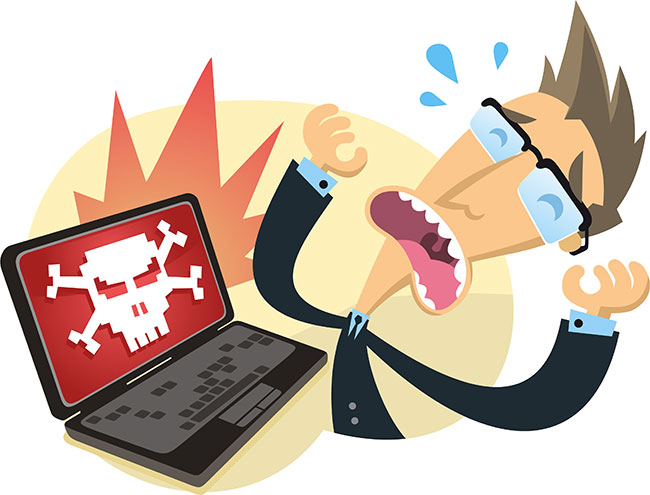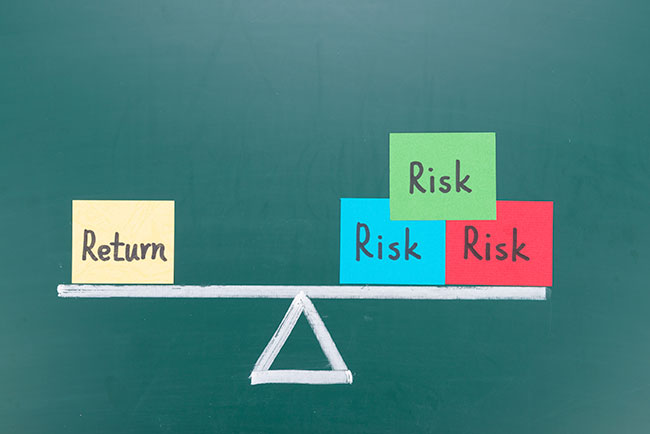••• food research
More than just gluten-free
Consumers see benefits beyond the obvious for gluten-free foods
 Despite skepticism of gluten-free diets, Americans are consuming gluten-free foods more than ever before. New research from Chicago research firm Mintel reveals that nearly half (47 percent) of consumers agree that gluten-free diets are a fad, compared to 31 percent in 2013. What’s more, one-quarter (25 percent) of consumers report that they consume gluten-free foods, a 67 percent increase from 2013.
Despite skepticism of gluten-free diets, Americans are consuming gluten-free foods more than ever before. New research from Chicago research firm Mintel reveals that nearly half (47 percent) of consumers agree that gluten-free diets are a fad, compared to 31 percent in 2013. What’s more, one-quarter (25 percent) of consumers report that they consume gluten-free foods, a 67 percent increase from 2013.
A testament to innovation in the category, Mintel research shows that some 90 percent of gluten-free food consumers are satisfied with available gluten-free food options and 35 percent agree that the quality of gluten-free foods is higher than before – so much so that some Americans are willing to pay a premium for gluten-free options, including 26 percent of consumers who agree that gluten-free foods are worth their added cost.
When looking at the reasons why consumers gravitate toward gluten-free foods – aside from a gluten intolerance or sensitivity – Mintel research shows that consumers perceive foods with any free-from claim to be both healthier and less processed. Likewise, growth of gluten-free foods is driven by health concerns, with 37 percent of consumers reporting that they eat gluten-free foods because doing so is better for their overall health and 16 percent doing so because “gluten is bad for you.” Another 11 percent of consumers eat gluten-free foods because a health care professional suggested they eliminate gluten from their diet.
Despite linking gluten-free foods to health, consumers who eat these foods for weight loss dropped from 25 percent to 19 percent 2014-2015, suggesting that consumers are more likely to view gluten-free products as a contributing factor to their overall well-being than simply as a weight-loss tool. This is evidenced by the 23 percent of consumers who report that they only incorporate gluten-free foods into their diet some of the time.
Skeptical attitudes toward gluten-free diets have done nothing to hinder sales of gluten-free foods, as the category has experienced growth of 136 percent from 2013-2015, reaching estimated sales of $11.6 billion in 2015. With over one-quarter (27 percent) of gluten-free food consumers looking for gluten-free labels on food packaging, gluten-free food sales exploded from 2.8 percent of total food sales in 2013 to 6.5 percent in 2015.
However, trust in gluten-free product claims has slightly decreased, with 45 percent of consumers trusting that products bearing a gluten-free claim are actually gluten-free, down from 48 percent in 2014. Another 45 percent of consumers agree manufacturers should not label products as gluten-free if they never contained gluten in the first place.
“While some consumers view the gluten-free diet as a fad and are looking for improved nutrition and ingredients in gluten-free foods, consumption continues to trend upward. Large and small manufacturers are entering the gluten-free category, increasing the availability, quality and variety of gluten-free foods while Americans display interest in incorporating these foods into their diet,” says Amanda Topper, senior food analyst at Mintel. “However, since trust toward manufacturers’ labeling of gluten-free foods has slightly waned, they should consider providing messaging about the steps taken to ensure their products are gluten-free to reassure consumers. Americans have come to expect brands and products to be transparent and trust that the items they purchase are as advertised.”
When dining out, nearly three in 10 (28 percent) consumers with celiac disease are less strict about eating gluten-free foods compared to eating at home. According to Mintel Menu Insights, a quarterly census of U.S. food service venues, restaurants are expanding their gluten-free options to target these consumers: gluten-free as an ingredient claim on menus grew 127 percent from Q2 2012-Q2 2015 and is now the top nutritional ingredient claim.
Some 10 percent of U.S. restaurants tracked by Mintel Menu Insights feature a gluten-free menu, appealing to the 22 percent of gluten-free food consumers who are more likely to visit restaurants that have a specific gluten-free menu. Mintel Menu Insights also found that the number of items on gluten-free menus grew 9 percent from Q2 2012-Q2 2015, with gluten-free as a dish claim growing by 24 percent over that same period, making gluten-free the top menu item claim.
“While finding gluten-free foods away from home can prove difficult for gluten-free food consumers, there has been growth in gluten-free restaurant options as gluten-free diets have become more popular. In the past, it may not have been feasible for celiacs and gluten-free food consumers overall to find these foods at restaurants. Moving forward, there should be more expansive gluten-free menu offerings as the foodservice industry competes with retail for the rising number of gluten-free Americans,” says Topper.
••• health care research
Boomers need to take better care of themselves
They know what they’re not doing
 Baby Boomers believe in the value of prevention but many of America’s most influential generation are taking a reactive, and sometimes risky, approach when it comes to managing their health, as revealed by the first MDVIP Boomer Health Survey.
Baby Boomers believe in the value of prevention but many of America’s most influential generation are taking a reactive, and sometimes risky, approach when it comes to managing their health, as revealed by the first MDVIP Boomer Health Survey.
The national survey of 1,049 Baby Boomers, conducted by research firm Ipsos Public Affairs on behalf of MDVIP, a Boca Raton, Fla.-based physician network, shows that while 94 percent of Boomers believe preventive care is an important part of staying healthy, three out of four say they should be doing more to better manage their health (74 percent). Half of Boomers (46 percent) say they don’t exercise regularly and more than a third say they don’t eat healthy (35 percent) or get sufficient sleep (37 percent, seven to eight hours of sleep a night).
More than 75 million Baby Boomers – those born between 1946 and 1964 – are now living in the United States. This aging population is expected to live longer than their parents’ generation but with higher rates of chronic illness which can lead to diminished quality of life in their later years. MDVIP commissioned the research to better understand Boomers’ perceptions and concerns related to their current health and how primary care experiences are influencing their overall well-being.
What would motivate Boomers to get on a healthier track? Though 73 percent of those surveyed report suffering from a chronic health condition, almost half (43 percent) are playing the “waiting game,” saying it would take an unexpected, life-threatening diagnosis for them to invest more in staying healthy. Additionally, 14 percent say a friend or family member’s health scare would be an impetus for change. Other motivators are having an expert create a clear plan tailored to helping them achieve their health goals (28 percent) and having a strong support system of friends, family and mentors to encourage them (25 percent). About 17 percent claim nothing would motivate them, believing they have little control over their future health.
“The survey findings show that Boomers have a greater health consciousness than previous generations but also expose the discrepancies between what Boomers know they should be doing to stay healthy versus the reality,” says Dr. Bernard Kaminetsky, medical director and a founding physician for MDVIP. “A health scare or serious illness is frequently the first wake-up call for people but many chronic conditions plaguing Boomers today – from diabetes to cardiovascular disease – are often preventable. This is where good primary care plays a key role, by helping patients identify their risk factors early and influencing the necessary lifestyle changes in order to mitigate, and even prevent, disease.”
The gap between Boomer beliefs and behavior may be linked to shortcomings in primary care, with nearly half of the respondents (45 percent) reporting frustrations with their primary care experience. The findings revealed the top three frustrations about visiting their primary care physician are waiting while in the office to see the doc-tor (32 percent), the limited time they actually have with the doctor (26 percent) and trying to get an appointment (18 percent).
In addition, 31 percent report that they typically spend more time sitting in the waiting room than they actually spend with their doctor; 28 percent say that they spend more time getting their car oil changed than they do with their doctor. Thirty percent have had to track down their doctor’s office to get test results; 23 percent say their doctor isn’t available when they need him/her. And many Boomers feel their doctor doesn’t really know them, with 31 percent doubting their doctor would recognize them on the street.
More than a third (36 percent) have taken action as a result of these frustrations, including 27 percent who have changed or have thought about changing their primary care doctor.
For most Boomers, the actual experience of visiting their primary care doctor is a chore: 45 percent compare it to grocery shopping, 11 percent to airport security and 10 percent to waiting in line at Disney. Only a quarter (25 percent) say their actual experience is like talking with a trusted advisor. Eighteen percent compare conversations with their doctor to talking to a boss who is running late.
When asked what they would most value in their primary care doctor, 62 percent say visits that don’t feel hurried and last as long as needed; 50 percent want a physician with a kind and compassionate bedside manner; and 39 percent want a physician who focuses more on prevention and wellness, not just treating them when they’re sick.
“These insights highlight the increasing challenges of traditional, volume-based medicine that are driving more consumers to look for healthcare alternatives,” says Bret Jorgensen, chairman and CEO of MDVIP. “Many people want and need a close relationship with their doctor, who knows them well, customizes a plan to optimize their overall health and has the ability to intervene and coach along the way. Data shows that patients who are actively engaged in their health and have better relationships with their doctor are achieving improved outcomes and better management of chronic conditions.”
The MDVIP Boomer Health Survey was conducted August 25-31, 2015, via an online interview, in English, by Ipsos Public Affairs. The sample was composed of 1,049 U.S. adults between the ages of 51 and 69 who have a primary care doctor or have seen a primary care doctor in the past five years. An additional group of 407 Boomers were interviewed in the New York metro area. Statistical margins of error are not applicable to online polls. All sample surveys and polls may be subject to other sources of error, including, but not limited to, coverage error and measurement error. Where figures do not sum to 100, this is due to the effects of rounding. The precision of Ipsos online polls is measured using a credibility interval. In this case, the poll has a credibility interval of plus or minus 3.4 percentage points for all respondents.
••• lifestyle research
Our love-hate relationship with technology
It’s awful but I can’t live without it
 As technology continues to seep into seemingly every aspect of everyday life – and with familiarity so often breeding contempt – it should come as no surprise that it rubs some Americans the wrong way. Many adults remain divided on how technology impacts the way we live our lives. On the one hand, strong majorities believe that technology has improved the overall quality of their lives (71 percent) and encourages people to be more creative (68 percent). But at the same time, strong majorities also believe technology is creating a lazy society (73 percent), has become too distracting (73 percent), is corrupting interpersonal communications (69 percent) and is having a negative impact on literacy (59 percent).
As technology continues to seep into seemingly every aspect of everyday life – and with familiarity so often breeding contempt – it should come as no surprise that it rubs some Americans the wrong way. Many adults remain divided on how technology impacts the way we live our lives. On the one hand, strong majorities believe that technology has improved the overall quality of their lives (71 percent) and encourages people to be more creative (68 percent). But at the same time, strong majorities also believe technology is creating a lazy society (73 percent), has become too distracting (73 percent), is corrupting interpersonal communications (69 percent) and is having a negative impact on literacy (59 percent).
These are some of the results of The Harris Poll of 2,220 adults surveyed online between June 17 and 22, 2015.
On an encouraging note, a majority of Americans say technology has had a positive effect on their ability to learn new skills (63 percent). Over four in 10 also say technology has a positive effect on: their relationships with friends (46 percent); their ability to live life the way they want (45 percent); their happiness (43 percent); and their social life (42 percent).
A plurality says the same of its effect on their work productivity (36 percent) and their work life (35 percent).
While a plurality (36 percent) believes technology has a positive effect on their productivity at home, it’s worth noting that nearly one quarter (23 percent) disagree with this sentiment.
It’s well known that different generations hold differing opinions when looking at any aspect of technology – be it usage, adoption or general attitudes. Knowing that Millennials are traditionally the most attuned to their tech devices, it comes as no surprise that this group is more likely to say technology has had a positive effect on nearly all aspects tested, including: ability to learn new skills (72 percent vs. 59 percent Gen Xers, 60 percent Baby Boomers and 56 percent Matures); relationships with friends (59 percent vs. 46 percent, 36 percent and 34 percent), ability to live the way they want to (53 percent vs. 43 percent, 39 percent and 40 percent); happiness (52 percent vs. 42 percent, 37 percent and 38 percent); social life (57 percent and 42 percent, 30 percent and 29 percent); and relationships with family (46 percent vs. 36 percent, 33 percent and 27 percent).
However, there is a key exception – their productivity. Millennials are more likely than all other generations to say technology has had a negative effect on their productivity both at home (32 percent vs. 21 percent Gen Xers, 20 percent Baby Boomers and 14 percent Matures) and at work (14 percent vs. 8 percent, 3 percent and 2 percent).
While Millennials may be the most likely group to say technology positively affects their relationships and the most likely to say it enhances their social life (67 percent vs. 53 percent Gen Xers, 36 percent Baby Boomers and 40 percent Matures), their family and friends might feel differently. Millennials also happen to be more likely than any other generation to say their friends/family think they use technology too much (46 percent vs. 27 percent Gen Xers, 13 percent Baby Boomers and 11 percent Matures).
Men and women offer some differing opinions on how technology affects their lives as well. Women are more likely than men to hold the negative opinions that technology has become too distracting (76 percent vs. 70 per-cent of men) and that it gets upgraded/updated too quickly (67 percent vs. 57 percent). They’re also more likely to believe it has a negative effect on their productivity at home (30 percent vs. 17 percent) and safety and security (18 percent vs. 13 percent). However, women don’t find it all bad. They’re also more likely than men to say they use it as an escape from their busy lives (50 percent vs. 43 percent).
Meanwhile, men are more likely than women to see the positive aspects of technology on their lives. This includes their ability to learn new skills (67 percent vs. 60 percent of women) and to live life the way they want (50 percent vs. 40 percent). Men are also more likely to believe technology positively impacts their safety and security (45 percent vs. 34 percent of women), their productivity at home (44 percent vs. 28 percent), their work productivity (43 percent vs. 29 percent), and their work life (42 percent vs. 29 percent).
Despite many concerns, it’s clear Americans still have a hard time unplugging. When faced with a list of technological devices and general life staples and asked how long they could live without each, majorities of Americans indicate that they could make it a week or less without Internet access (67 percent), a computer/laptop (60 percent), mobile phone (59 percent) or television (55 percent), with over two in 10 going so far as to state that they simply could not live without them (27 percent, 22 percent, 26 percent and 21 percent, respectively).
Just to add a dash of perspective, about four in 10 said they could only make it a week or less (or not at all) without caffeine (42 percent) or sex (39 percent), with roughly two in 10 saying they could not live without them under any circumstances (20 percent and 18 percent, respectively).
So what can Americans live without? Just over one-quarter (26 percent) say they could live without sex altogether, while just 23 percent say the same of their computers and 18 percent say the same about Internet access. In other words, more Americans say they can live without sex than say they can live without the Internet or their computer!
This Harris Poll was conducted online, in English, within the United States between June 17 and 22, 2015 among 2,220 adults (aged 18 and over). Figures for age, sex, race/ethnicity, education, region and household income were weighted where necessary to bring them into line with their actual proportions in the population. Propensity score weighting was also used to adjust for respondents’ propensity to be online. All sample surveys and polls, whether or not they use probability sampling, are subject to multiple sources of error which are most often not possible to quantify or estimate, including sampling error, coverage error, error associated with nonresponse, error associated with question wording and response options, and post-survey weighting and adjustments. Therefore, The Harris Poll avoids the words “margin of error” as they are misleading. All that can be calculated are different possible sampling errors with different probabilities for pure, unweighted, random samples with 100 percent response rates. These are only theoretical because no published polls come close to this ideal.
••• financial services
American investors have risky view of risk
Investment horizons may be too short
 A focus on short-term financial performance and misunderstandings about the nature of investment risk may have an impact on American investors’ financial well-being. According to a new TIAA-CREF survey, 36 percent of respondents look to one-year performance as the most important indicator of an investment’s return, with an additional 16 percent looking to quarterly performance as most important. Nearly half (47 percent) have purchased a fund based on its performance during the previous year rather than looking at its performance over a longer-term investment horizon such as five or 10 years.
A focus on short-term financial performance and misunderstandings about the nature of investment risk may have an impact on American investors’ financial well-being. According to a new TIAA-CREF survey, 36 percent of respondents look to one-year performance as the most important indicator of an investment’s return, with an additional 16 percent looking to quarterly performance as most important. Nearly half (47 percent) have purchased a fund based on its performance during the previous year rather than looking at its performance over a longer-term investment horizon such as five or 10 years.
While investors continue to grapple with the challenges of market volatility, it’s even more critical for them to understand key investment concepts around diversification, asset allocation, risk and returns. However, among those surveyed, 71 percent of American investors believe they can eliminate investment risk by having a diversi-fied portfolio; in fact, while a diversified portfolio can help to manage investment risk, there is no way to eliminate it altogether. Similarly, although investors should maintain an appropriate level of risk in their portfolios, many are unclear about how that works: 53 percent think that higher risk guarantees higher returns.
All investors would benefit from better access to financial education on these topics. But for Gen Y, the challenges posed by unpredictable markets and their impact on investing decisions are even more pronounced. While 29 percent of all respondents misunderstand the nature of various asset classes, indicating that they believe that all investments offer the same level of risk, 40 percent of Gen Y report the same, and 64 percent of Gen Y think that higher risk guarantees higher returns.
Despite some misconceptions about investment performance, American investors have a clear picture of what they want from their portfolio. Two-thirds of investors believe it’s more important that their portfolio allows them to achieve their life goals, such as funding a comfortable retirement or paying for a college education, versus one-third who place more importance on a portfolio that consistently meets specific investment criteria, such as a certain percentage return.
In order to achieve their objectives for their investments, however, investors need to ensure they are not taking actions that can undermine long-term performance. For instance, 36 percent of respondents say that market volatility is the most likely reason they would rebalance their portfolio – in contrast to most advisors’ recommendation to ride out market fluctuations as part of a long-term investing strategy. Fewer say they are most likely to rebalance when most advisors would recommend – at a regular time of year like a birthday (21 percent) or after a life change such as marriage, the birth of a child or grandchild, or the death of a spouse (20 percent).
The survey was conducted by KRC Research from Oct. 7 to Oct. 12, 2015, via an online survey of 1,000 U.S. adults who are employed, who contribute to an employer-sponsored retirement plan or an individual retirement account, and who make or share in financial decision making for their household. The survey was not conducted among TIAA-CREF participants and the survey questions and responses did not reference or concern any TI-AA-CREF product, service or client experience.
••• alcoholic beverages
Millennial drinkers thirsting for quality, authenticity
‘Treat-seeking’ on the rise
 Ben Cooper of U.K.-based beverage news site just-drinks reports that the deep and sustained global recession has left its mark on consumers and, in particular, on how they make premium purchasing decisions. In the alcoholic beverages categories, the premiumization trend is once more fueling growth, according to a new just-drinks study. “The recession in the late-2000s changed the consumer forever, particularly young Millennials that became adults during that time,” says industry commentator Richard Siddle in the report.
Ben Cooper of U.K.-based beverage news site just-drinks reports that the deep and sustained global recession has left its mark on consumers and, in particular, on how they make premium purchasing decisions. In the alcoholic beverages categories, the premiumization trend is once more fueling growth, according to a new just-drinks study. “The recession in the late-2000s changed the consumer forever, particularly young Millennials that became adults during that time,” says industry commentator Richard Siddle in the report.
Post-recession consumers, the report continues, are “far more conscious of how and where they spend their money. It has made them risk-averse and keen to seek out ready-made solutions that make their lives easier and cheaper to navigate.” While this does not by any means signify the end of the premiumization trend, it certainly qualifies it. The premiumization trend will increasingly be driven by “treat-seeking,” with premium brands that market themselves to consumers as a treat, or for a special occasion, particularly well-placed for growth.
The tough years have made consumers “appreciate far more the experiences and the opportunities they have to treat themselves, their friends and family.” The “search for the next thing to do, taste or drink” will drive pre-miumization across all main consumer product categories but particularly in alcoholic drinks, the report notes.
A growing trend towards moderation and greater health awareness on the part of consumers means a “less, but better” trend will be discernible but brands will have to work harder to persuade consumers that the “better brands” are worth the extra money. Factors such as provenance, tradition and a story they can relate to will be the key factors influencing consumer purchasing decisions.
The report details examples of more considered and conditional premium purchasing behavior across diverse drinks categories. For instance, while the overall beer sector remains in decline, countering that long-term trend is the continuing growth of smaller, higher-value categories such as world, premium, craft, keg, local, regional, flavored and specialist beers. “Combined, these are bringing new value propositions to a beer category having to cope with overall volume declines from its biggest players,” the report states.
In the spirits sector, premiumization has long been a key driver and will remain the primary factor influencing all the main spirits categories, according to the report. However, to stand out in the future brands will need to demonstrate “far more depth to their story” if they are to connect with an increasingly knowledgeable consumer.
“Consumers, particularly younger Millennials, want to buy into products they can relate to and that are relevant to their lives, be it through the story, the traditions, its values and most importantly what the brand stands for,” the report states. “Limited, exclusive and special editions are driving innovation and consumer interest right across the spirits category. It is also helping to push a wider range of spirits towards high-end consumers.”
The importance of provenance and back-story will also mean a continued and increasing blurring between craft and premium products. Brands will aim to stretch and promote their products’ craft and heritage credentials as far as they can. However, to stand out from all the noise, the report says, both newcomers and established players will need to have a genuine point of difference and be prepared to invest in consumer engagement, particularly through social media.
Indeed, it is not just in relation to product credentials that the premium consumer will grow more demanding. The report also suggests that as the premium spirits market is becoming ever more international, the online sales channel is becoming more significant. “We can expect this whole area of the spirits category to become more sophisticated with new tailor-made, bespoke and personal services being offered to high-spending consumers.”
Big brands have already recognized the value and potential of marketing to high-end consumers online. A prime example of targeted online retail Web sites is Diageo’s Alexander & James site which sells single malts, limited editions and new releases. Diageo is finding the consumer insights gained through the Web site are allowing it to understand better the needs and buying behavior of premium spirits drinkers.
Provenance and heritage have always been crucial elements in marketing premium wine but increasingly the premium offer in the wine category will go beyond just finding interesting products with a story behind them, with premium on-trade wines sales being increasingly driven by consumer demand for experience-led offers, wine-maker dinners and themed wine nights. This in turn will boost the market for wines by the glass and the wider use of draft wine dispensing systems.
Online is also expected to become an increasingly important sales channel for wine, enabling retailers and producers alike to offer exclusive, niche and limited editions to engaged consumers.
